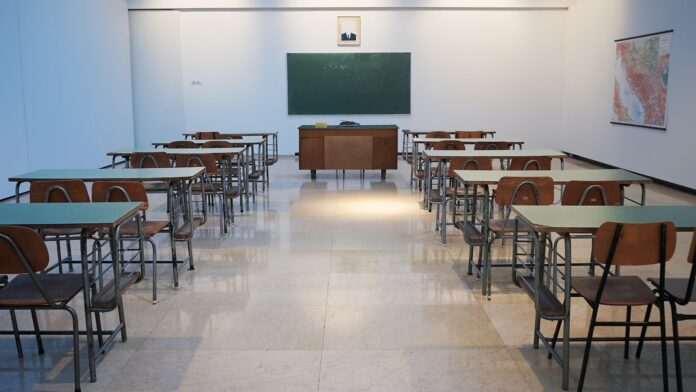
THE Department of Education has urged schools to consider ways of improving ventilation in classrooms that do not leave pupils struggling to stay warm over the winter, and, as temperatures slide to single digits, the department has also advised schools that windows in classrooms do not have to be left fully open to achieve adequate levels of ventilation.
Windows should only be left fully open when classrooms are not being used, and schools can “offset” the “chilling effect” of winter, “by partially opening the windows nearest to and above radiators”, a department spokesman said.
“The over-arching approach for schools should be to have windows open as fully as possible when classrooms are not in use (e.g. during break-times or lunch-times and also at the end of each school day) and partially open when classrooms are in use,” he said.
“It is worth noting that windows do not need to be open as wide in windy/colder weather in order to achieve the same level of airflow into the classroom. This will assist in managing comfort levels in classrooms during periods of colder weather.
“The day to day running of schools is the responsibility of the Board of Management of the school,” said the spokesman.
He added that, in line with public health guidance, “schools are urged to consider if room ventilation especially in classrooms, break rooms and canteens can be improved without causing discomfort; ensure that, wherever possible, doors and windows are open to increase natural ventilation; and increase air flow and ventilation weather permitting.”
The spokesman added: “A dedicated team has been established in the Department to support schools that may have concerns about ventilation…schools that identify inadequate ventilation in a room can utilise their minor work grant (for minor improvements) or apply for emergency works grant assistance to address ventilation enhancements on a permanent basis”.
“Where the above measures have been undertaken, and poor ventilation continues to exist in a particular room/area, air cleaners may be considered as an additional measure in conjunction with other methods of ventilation that are available.”
The spokesman argued there was “no one solution that fits all scenarios” in schools, and that, “each application requires bespoke analysis and selection of the appropriate unit(s) matched to the specific room size and volume”.
He said public health guidance was that “Carbon Dioxide (CO2) monitors can play a part in providing a useful general indication that areas/rooms may not be adequately ventilated, the provision of portable CO2 monitors provides schools with the flexibility to focus their use to those rooms where most beneficial can inform strategies for optimising ventilation in the school”.
He revealed that, “in excess of 35,400 monitors” have been delivered to primary (18,262) and post-primary (17,215) schools nationwide “at a cost of circa €4 million”.
“To date in 2021, 14 schools applied for additional funding under the emergency works scheme to assist with ventilation. Of these, 10 have been approved, one was returned to the school to review the scope of works, one is being assessed and two were found to be not ventilation related, 18 schools with ventilation queries have been assisted directly by a member of the Department’s technical team,” he said.
The Minister for Health, Stephen Donnelly told RTE PrimeTime last Tuesday, that, despite recommendations by the European Centre for Disease Control, the US Centre for Disease Control, the World Health Organisation, as well as Nphet’s own expert group on ventilation, that HEPA air filters be used to improve ventilation, the “the advice from the experts at the moment, is that CO2 monitors, fresh air circulating with the windows and so forth, is the way to go”.










